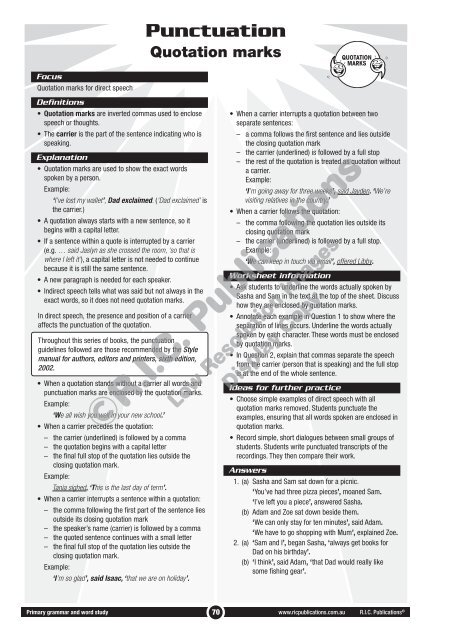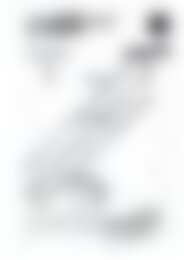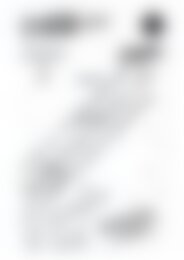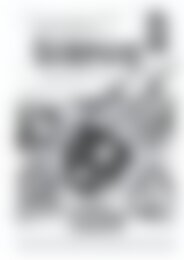RIC-20236 Primary Grammar and Word Study Year 3 – Punctuation
Create successful ePaper yourself
Turn your PDF publications into a flip-book with our unique Google optimized e-Paper software.
Focus<br />
Quotation marks for direct speech<br />
Definitions<br />
• Quotation marks are inverted commas used to enclose<br />
speech or thoughts.<br />
• The carrier is the part of the sentence indicating who is<br />
speaking.<br />
Explanation<br />
• Quotation marks are used to show the exact words<br />
spoken by a person.<br />
Example:<br />
‘I’ve lost my wallet’, Dad exclaimed. (‘Dad exclaimed’ is<br />
the carrier.)<br />
• A quotation always starts with a new sentence, so it<br />
begins with a capital letter.<br />
• If a sentence within a quote is interrupted by a carrier<br />
(e.g. … said Jaslyn as she crossed the room, ‘so that is<br />
where I left it’), a capital letter is not needed to continue<br />
because it is still the same sentence.<br />
• A new paragraph is needed for each speaker.<br />
• Indirect speech tells what was said but not always in the<br />
exact words, so it does not need quotation marks.<br />
In direct speech, the presence <strong>and</strong> position of a carrier<br />
affects the punctuation of the quotation.<br />
Throughout this series of books, the punctuation<br />
guidelines followed are those recommended by the Style<br />
manual for authors, editors <strong>and</strong> printers, sixth edition,<br />
2002.<br />
• When a quotation st<strong>and</strong>s without a carrier all words <strong>and</strong><br />
punctuation marks are enclosed by the quotation marks.<br />
Example:<br />
‘We all wish you well in your new school.’<br />
• When a carrier precedes the quotation:<br />
<strong>–</strong> the carrier (underlined) is followed by a comma<br />
<strong>–</strong> the quotation begins with a capital letter<br />
<strong>–</strong> the final full stop of the quotation lies outside the<br />
closing quotation mark.<br />
Example:<br />
Tania sighed, ‘This is the last day of term’.<br />
• When a carrier interrupts a sentence within a quotation:<br />
<strong>–</strong> the comma following the first part of the sentence lies<br />
outside its closing quotation mark<br />
<strong>–</strong> the speaker’s name (carrier) is followed by a comma<br />
<strong>–</strong> the quoted sentence continues with a small letter<br />
<strong>–</strong> the final full stop of the quotation lies outside the<br />
closing quotation mark.<br />
Example:<br />
‘I’m so glad’, said Isaac, ‘that we are on holiday’.<br />
<strong>Punctuation</strong><br />
Quotation marks<br />
• When a carrier interrupts a quotation between two<br />
separate sentences:<br />
<strong>–</strong> a comma follows the first sentence <strong>and</strong> lies outside<br />
the closing quotation mark<br />
<strong>–</strong> the carrier (underlined) is followed by a full stop<br />
<strong>–</strong> the rest of the quotation is treated as quotation without<br />
a carrier.<br />
Example:<br />
‘I’m going away for three weeks’, said Jayden. ‘We’re<br />
visiting relatives in the country.’<br />
• When a carrier follows the quotation:<br />
<strong>–</strong> the comma following the quotation lies outside its<br />
closing quotation mark<br />
<strong>–</strong> the carrier (underlined) is followed by a full stop.<br />
Example:<br />
‘We can keep in touch via email’, offered Libby.<br />
Worksheet information<br />
• Ask students to underline the words actually spoken by<br />
Sasha <strong>and</strong> Sam in the text at the top of the sheet. Discuss<br />
how they are enclosed by quotation marks.<br />
• Annotate each example in Question 1 to show where the<br />
separation of lines occurs. Underline the words actually<br />
spoken by each character. These words must be enclosed<br />
by quotation marks.<br />
• In Question 2, explain that commas separate the speech<br />
from the carrier (person that is speaking) <strong>and</strong> the full stop<br />
is at the end of the whole sentence.<br />
Ideas for further practice<br />
• Choose simple examples of direct speech with all<br />
quotation marks removed. Students punctuate the<br />
examples, ensuring that all words spoken are enclosed in<br />
quotation marks.<br />
• Record simple, short dialogues between small groups of<br />
students. Students write punctuated transcripts of the<br />
recordings. They then compare their work.<br />
©R.I.C. Publications<br />
Low Resolution Images<br />
Display Copy<br />
Answers<br />
1. (a) Sasha <strong>and</strong> Sam sat down for a picnic.<br />
‘You’ve had three pizza pieces’, moaned Sam.<br />
‘I’ve left you a piece’, answered Sasha.<br />
(b) Adam <strong>and</strong> Zoe sat down beside them.<br />
‘We can only stay for ten minutes’, said Adam.<br />
‘We have to go shopping with Mum’, explained Zoe.<br />
2. (a) ‘Sam <strong>and</strong> I’, began Sasha, ‘always get books for<br />
Dad on his birthday’.<br />
(b) ‘I think’, said Adam, ‘that Dad would really like<br />
some fishing gear’.<br />
<strong>Primary</strong> grammar <strong>and</strong> word study 70<br />
www.ricpublications.com.au R.I.C. Publications ®


